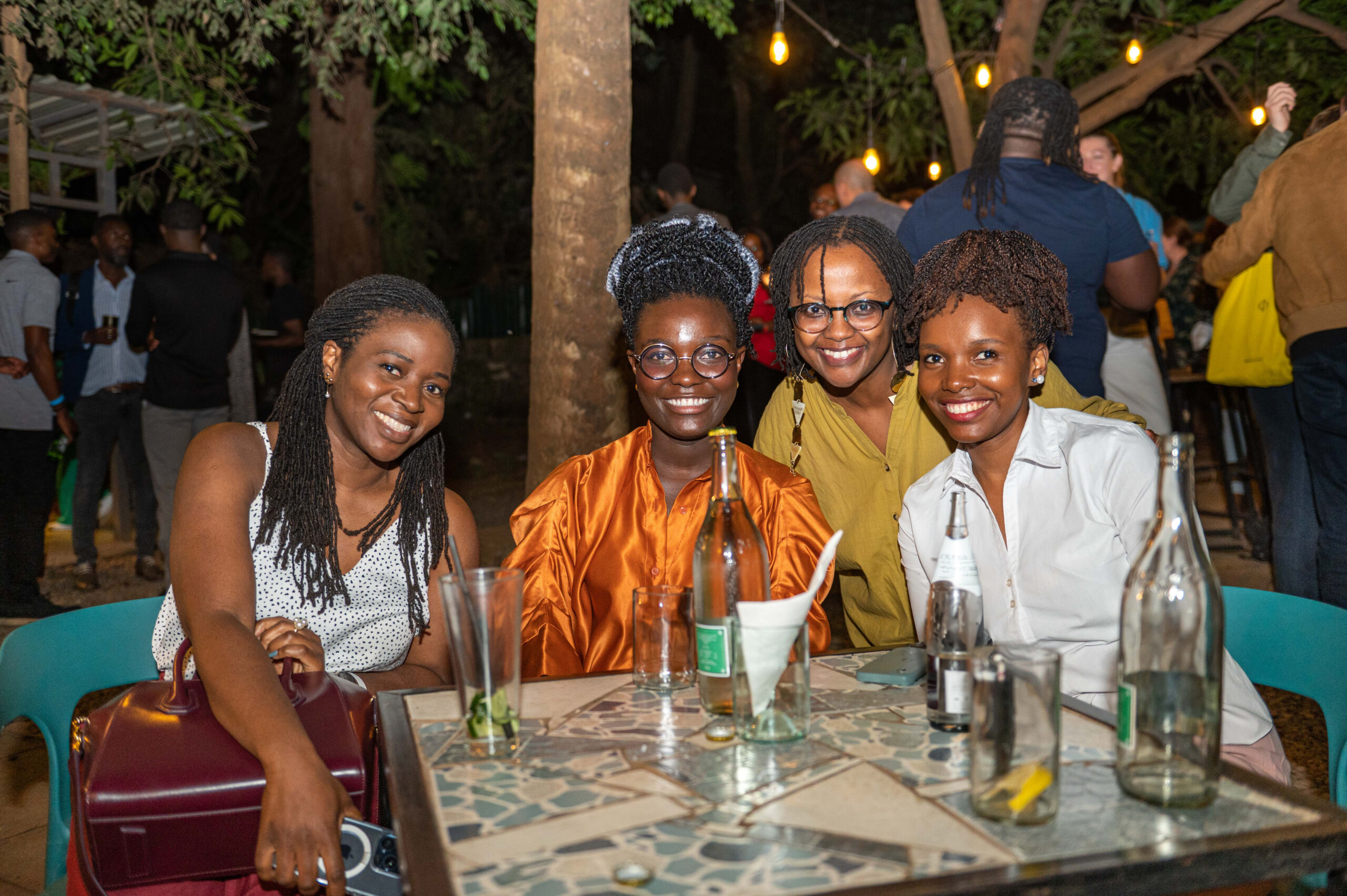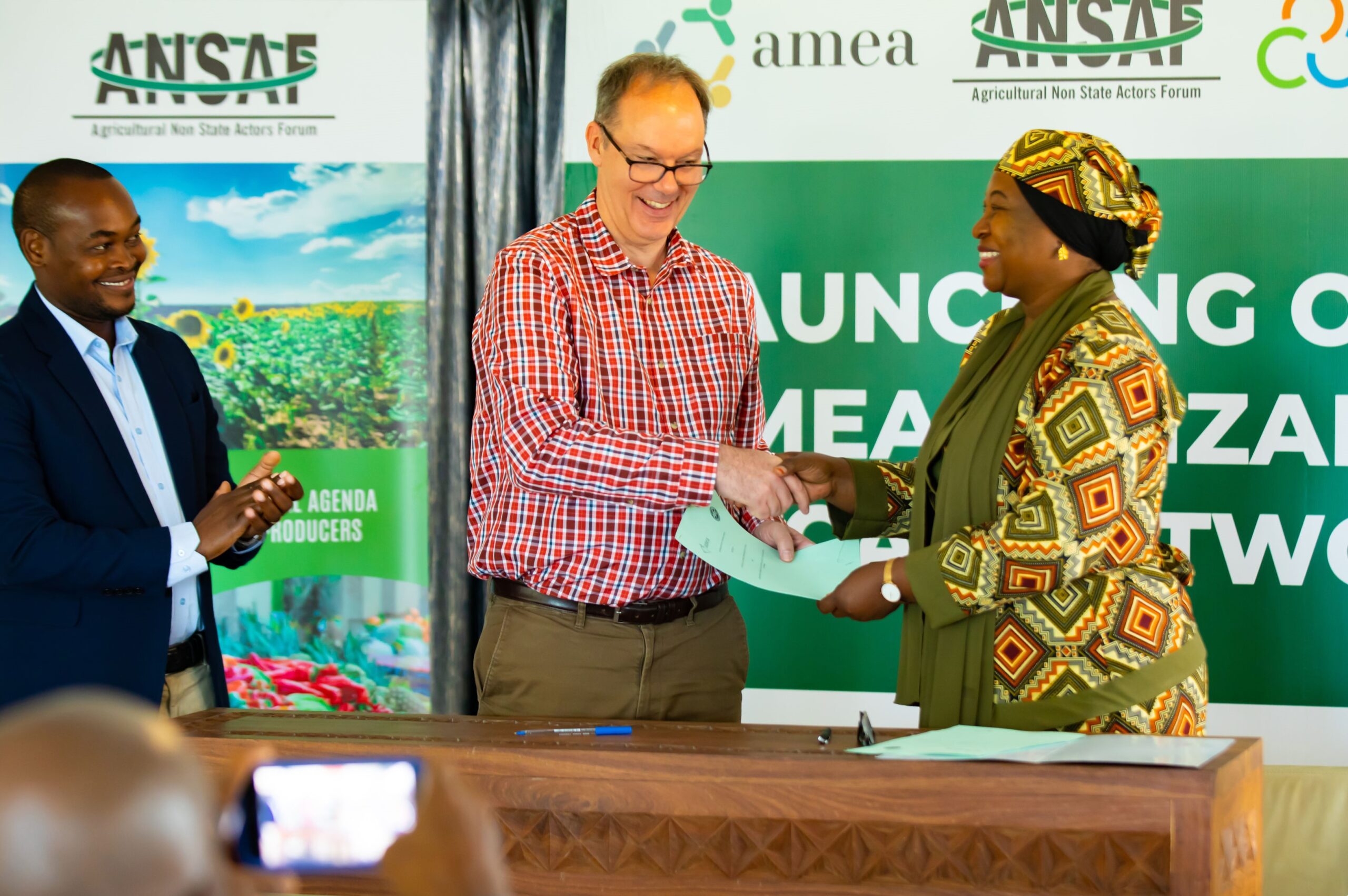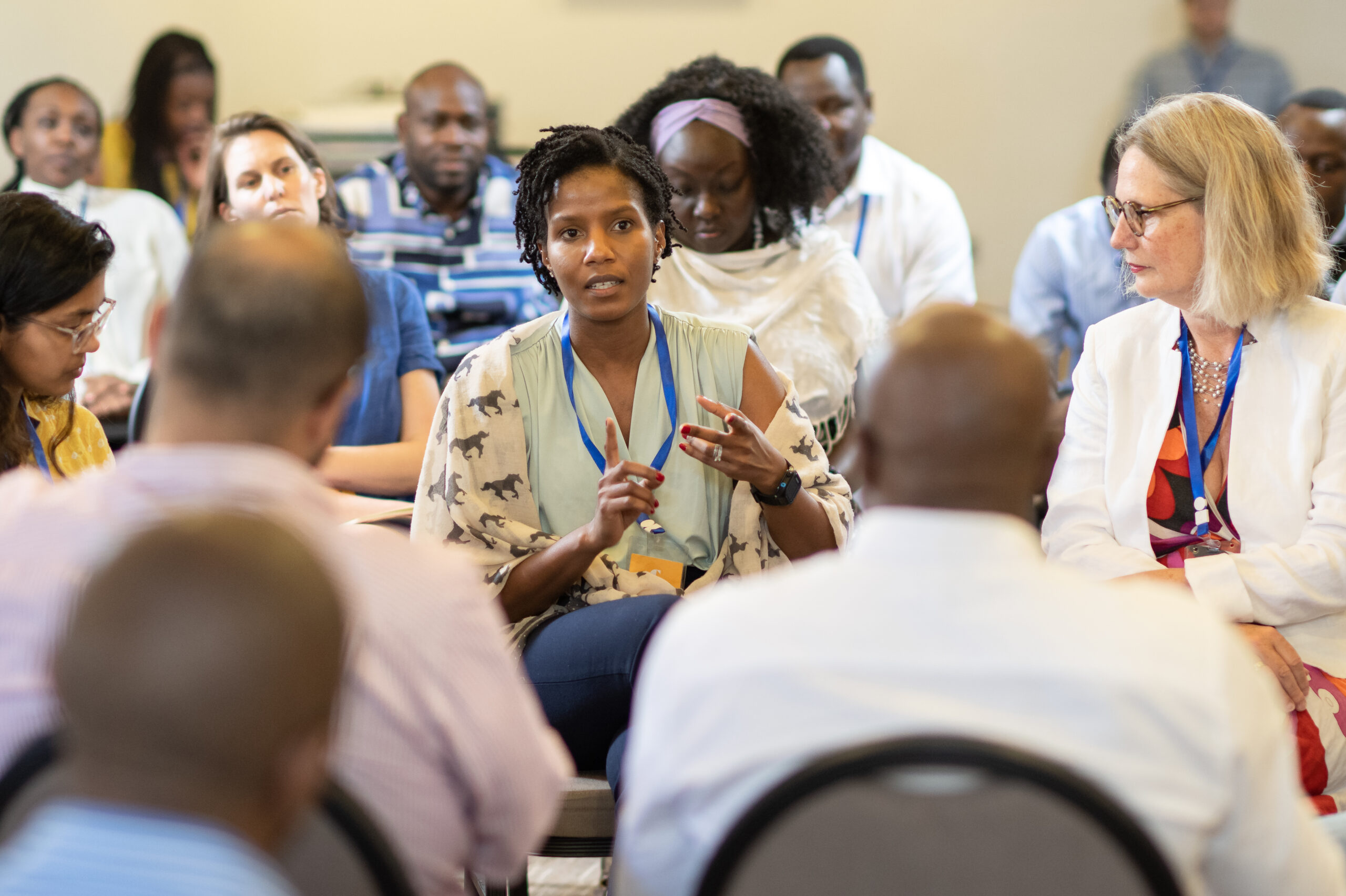
Guest post by Converge: How to design & lead an interactive fishbowl (part 2)
This is the second of a two-part article from our partners at Converge. See the original on Medium, and part 1 here.
By Carri Munn and Elsa Henderson
Fishbowl design — behind the scenes
For the fishbowl facilitators, there are some not-so-obvious keys to success. In this article, we illuminate the deeper design thinking that contributes to a positive participant experience while advancing the capacity of a diverse group to navigate the complexity of large scale collaboration. This version of a fishbowl is designed to engage dynamic tensions that are critical for impact networks seeking to advance their shared purpose. This article draws out key aspects of fishbowl design: framing dynamic tensions, having initial small group conversations, engaging participants in rearranging chairs in the room, and naming those who are most affected by the issues the group is exploring. With thoughtful preparation you can host an extraordinary fishbowl.
“I was surprised by the level of honesty that was reached. People were in the moment and engaging from the heart. We felt the genuine connection across the group.” –network coordinator
Describing dynamic tensions
Every group has dynamic tensions that represent different and seemingly contradictory impulses, such as desires to expand participants and desires to maintain small group intimacy; or some members wanting to move to prototyping innovations while others prefer to find full network alignment before embarking on experiments. Dynamic tensions are normal and there are often many at play simultaneously in any network. If approached with respect and care for the wisdom contained in the diversity of perspectives, dynamic tensions can be a rich source of creativity — unleashing energy that helps to advance a shared purpose.
The challenge for a facilitator is to skillfully unlock the potential bound up in the dynamic tensions. This process begins with framing topics for preliminary small group conversations that prime participants to engage fully in a fishbowl conversation. With support from key network leaders, the facilitator identifies two intersecting challenges and describes the dynamic tensions at play as polarities. We use a compass to illustrate this, placing one dynamic tension on the North and South axis and the other along the East and West axis.
To focus on two intersecting challenges, a facilitator might look to wisdom held by many indigenous peoples who connect elements and particular qualities to the four directions. In the traditions shared with us by Mexica and Taíno elders, the directions are associated with qualities of earth, physical structures and legacy in the north; fire, will, drive, and spiritual calling in the south; air, the mind, intellect, and innovation in the east; and water, the heart, emotions, and healing in the west. These and other similar long-held touchstones can guide your awareness as you sense into the dynamic tensions moving within the heart of your group.
Aligning the energies at play in the network with patterns found in nature provides an affirming check on the framing of the dynamic tensions. If you’ve named tensions that have resonance with the relationships of the four directions, you’re more likely to realize the potential of the group to explore perspectives and co-create new options to navigate the challenges they face. This is because patterns in nature are fractal and similar creative tensions occur at different scales across a wide variety of contexts. If network members are able to sense the resonance, the dynamic tensions will feel familiar and easier to explore.
A general example, common to the experience of many networks, might look like this image where the network is grappling with historical power structures resulting in inequities and the ethical motivation to move toward collective wellbeing. Within networks, we also typically find enthusiasm around new ideas as well as skepticism and fear associated with the instability of change. In summary, these two sets of tensions could be called Some-Many and Open-Closed. See below how we’ve placed them using the four directions.
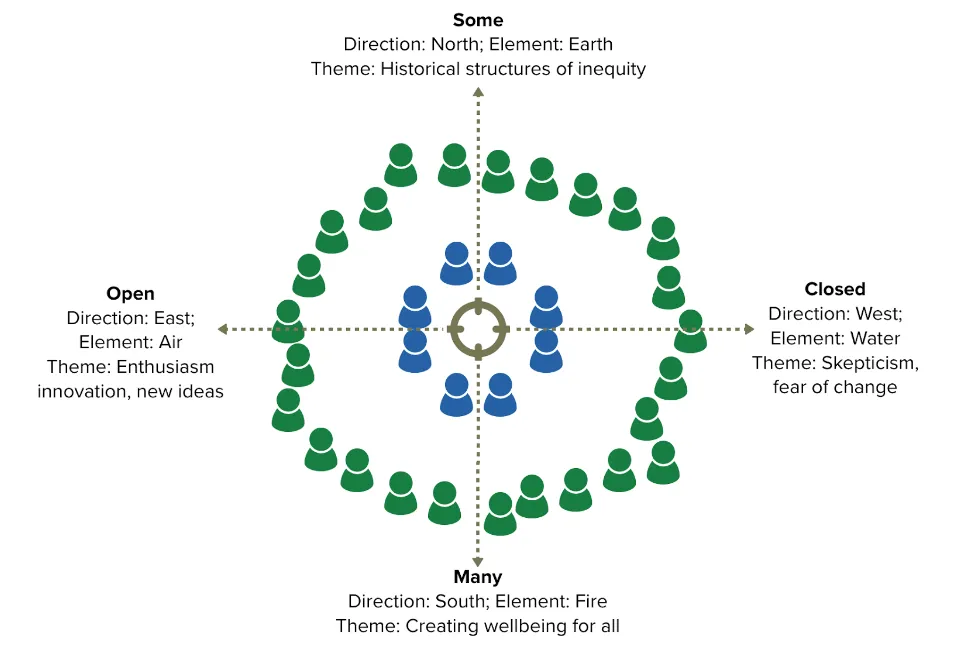
Naming and holding these tensions is more of art than science. You may notice that reducing the dynamics to four words, Some-Many and Open-Closed, feels insufficiently simple. This is intentional. Separating and categorizing a wide range of ideas, feelings, and motivations in an attempt to define the territory for participants will reduce the aliveness of the tensions to a flat jumble of words. To retain the creative potential living in the tensions, the facilitator points toward the tension rather than defining it. This is akin to telling only part of the story, then inviting participants to continue developing the narrative about what’s happening in the ecosystem. Leaving room for nuance and ambiguity is an essential aspect of the invitation that welcomes diverse perspectives into the fishbowl.
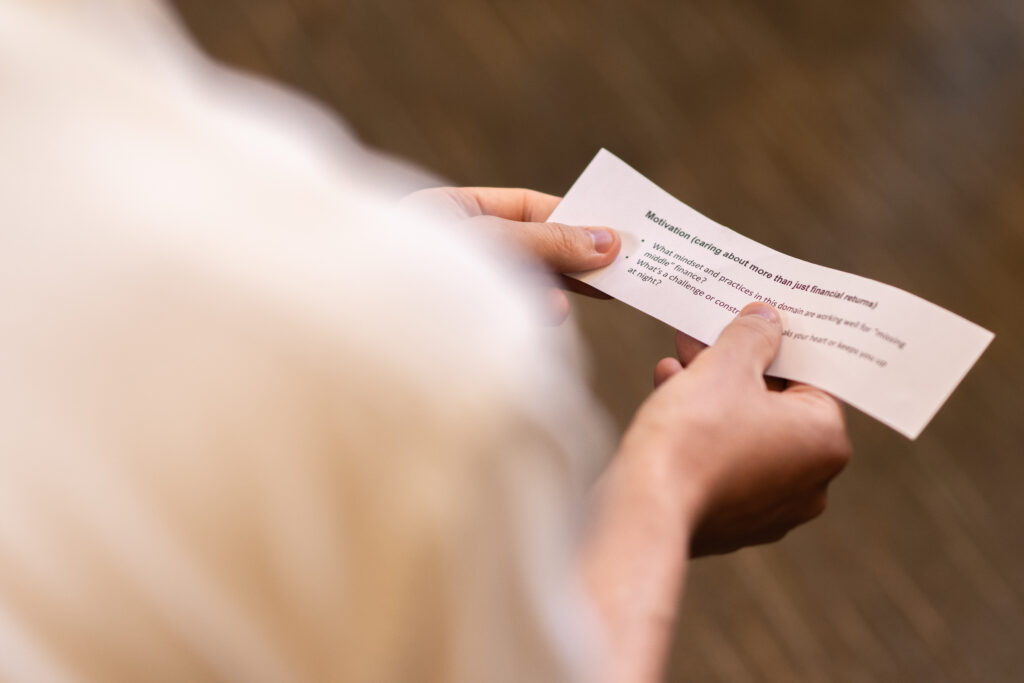
Collaborative for Frontier Finance, Annual Convening 2022, Dar Es Salaam
Starting in small groups
Once you have identified the dynamic tensions, the next step is to prepare the initial conversations for small groups. These priming discussions explore one of the four polarities that will be present in the fishbowl. The purpose of these conversations is three-fold: to get people talking, expand perspectives on the topic that will inform speakers in the fishbowl, and provide a representative set of initial volunteers (for each of the poles) who will sit in the center.
For the discussion, we typically name groups using each of the key words for the polarity (Some-Many, Open-Closed) and provide the following prompts for consideration. It’s important to note that while each group has a different polarity, they all explore their topic with the same questions. This provides a sense of common ground underlying the diverse perspectives being drawn out in preparation for the fishbowl.
- What mindset and practices are working well?
- What’s a challenge or constraint that breaks your heart or keeps you up at night?
Embodying change
Between conversations in small groups and the kick-off of the fishbowl, an important shift is needed. On the surface, people are moving chairs, yet at a deeper level the activity gives participants the embodied experience of changing form, moving through chaos, and resettling. This experience can build confidence in their collective capacity to navigate the unknown together and come out OK on the other side. Creating this shared experience sets the stage for the fishbowl conversation to hold the kinds of honest, innovative, and provocative perspectives that expand group understanding of the complex dynamics at play.
As the facilitator, it’s important to give the group clear directions about how to make the transition from small groups to one circle around the eight chairs at the center. For example, you will want to tell them that the process may be loud and messy and chaotic. This normalizes the experience. Then congratulate them on the other side of chaos, affirming their capacity to coordinate simple actions and make change together. It’s also helpful to have a few people in the room who understand the outcome and can nudge folks along as they form the outer rings of the fishbowl.
Presencing impacted people
Before setting the fishbowl in motion, it’s critical to invoke those who are most affected by current patterns in the system. We invite participants to imagine the people, plants, animals, lands, or future generations as if they are sitting at the center of the fishbowl. This helps participants consider those who are not present, many of whom are suffering. This move by the facilitator activates our inherent human motivation to care for one another. It also creates a direct tie to the network’s purpose and reminds participants that beyond the diversity of their individual perspectives, everyone present shares a similar vision.
Hopeful outcomes
With care and attention to your design, the fishbowl takes on a life of its own. Here are some reflections on what can go right from network participants and coordinators we’ve worked with.
One participant spoke about the participation and energy in the room:
“You could see what was important for people. When a topic was brought up, they took their place in it. There was something non-threatening and affirming that removed the whole issue of conflict. Participating was about showing what was important to you rather than being in opposition to what was important to someone else.”
Another highlighted the embodied quality of the conversation and how this supported them to follow what was being said and build upon it:
“The ability to physically see who said what and the ability to reference and build upon another’s comments made it easier for individuals to follow-up, expand upon a given point or issue.”
One of the network coordinators was surprised by the level of candor, noticing that honesty created momentum in the conversation:
“Folks seemed comfortable sharing “raw” or emotional comments in a safe and productive manner. This tone allowed others to empathize better with the person and their perspective. As a result, it seemed to generate follow-on conversations.”
Another member of the network coordination team observed that the simple structure of the fishbowl helped maintain group cohesion:
“The fishbowl felt like an aligning experience. People tended to respond to what they had heard and not go off on tangents. In a group discussion when you don’t have these kinds of rules, people generally don’t listen fully to what’s being said. The group was really cohesive—almost completing each other’s statements.”
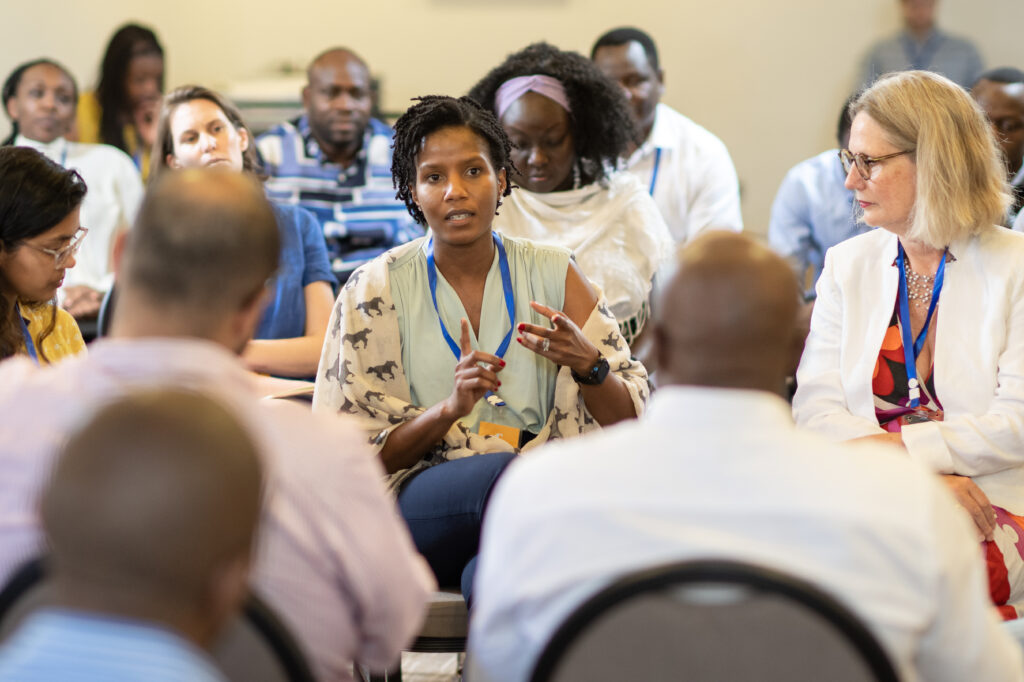
Collaborative for Frontier Finance, Annual Convening 2022, Dar Es Salaam
Navigating challenges
Fishbowls are unpredictable by nature, and every group is different. The process works well when you are bringing people together who care about shared purpose and have built trust for action. At the same time, we have seen certain challenges pop up, even in cohesive groups. Here are some suggestions for facilitators if you find yourself in tricky territory…
Getting stuck
If the conversation gets stuck on a topic, interrupt to acknowledge where people are currently focused. This could look like people circling around the same topic or shifting into problem solving before understanding the impacts of various challenges. You might ask those in the outer circle to identify three intersecting issues that are affecting the topic at hand. Invite them to tap in and share what else may be at play. You might introduce a new topic for consideration to change the trajectory of the conversation.
Low quality listening
If people aren’t listening attentively to one another, remind them about the importance of honoring different perspectives and lived experiences. This might look like people repeating what’s been said, not acknowledging and building upon the previous speaker’s perspective, or diverting the group to a tangent. Invite participants to explicitly acknowledge what was last said and connect what they are offering to previous comments.
One person talking too much
If one participant is grandstanding, either by insisting on a point or telling a long personal story, interrupt to shift focus. You might acknowledge the point being made and invite someone to speak to the implications of this for the people at the center or for the network’s work. If someone is telling an elaborate story, you might ask others to name the pattern in the system that is represented in this story, helping to bring the system dynamics back into focus. You could also interrupt the participant by appreciating their contribution and helping them link what they’re sharing with the conversation unfolding in the group. This bring attention back to the shared space and the intention to hear a diversity of perspectives.
Lack of participation
If people are not tapping in to join the conversation, you can pause the conversation noting that there are many people who haven’t yet shared. Ask those folks who have been in the center the longest to move to the outer circle. Then invite specific people who may have something to offer or call for those who have been contemplating responses but haven’t yet spoken to come forward.
With light facilitation and gentle invitations that orient attention to the group as a whole, our experience is that participants are keen to learn about the diversity of perspectives in the room.
__________________________
In summary, this article unpacks the nuance of designing an interactive fishbowl by offering a behind the scenes glimpse into the tangible and intangible elements that contribute to an engaging and dynamic large group conversation. An earlier article describes the value of using a fishbowl and how to engage participants.
If you have a group dealing with complexity that can benefit from shared sense-making, you might use this method to engage perspectives in a way that feels more playful and spontaneous than testifying or debating. If you’re looking to build community and uncover ways that participants might work more productively together, we hope you feel inspired to experiment with a fishbowl. We’d love for you to share what emerges from your experience.
